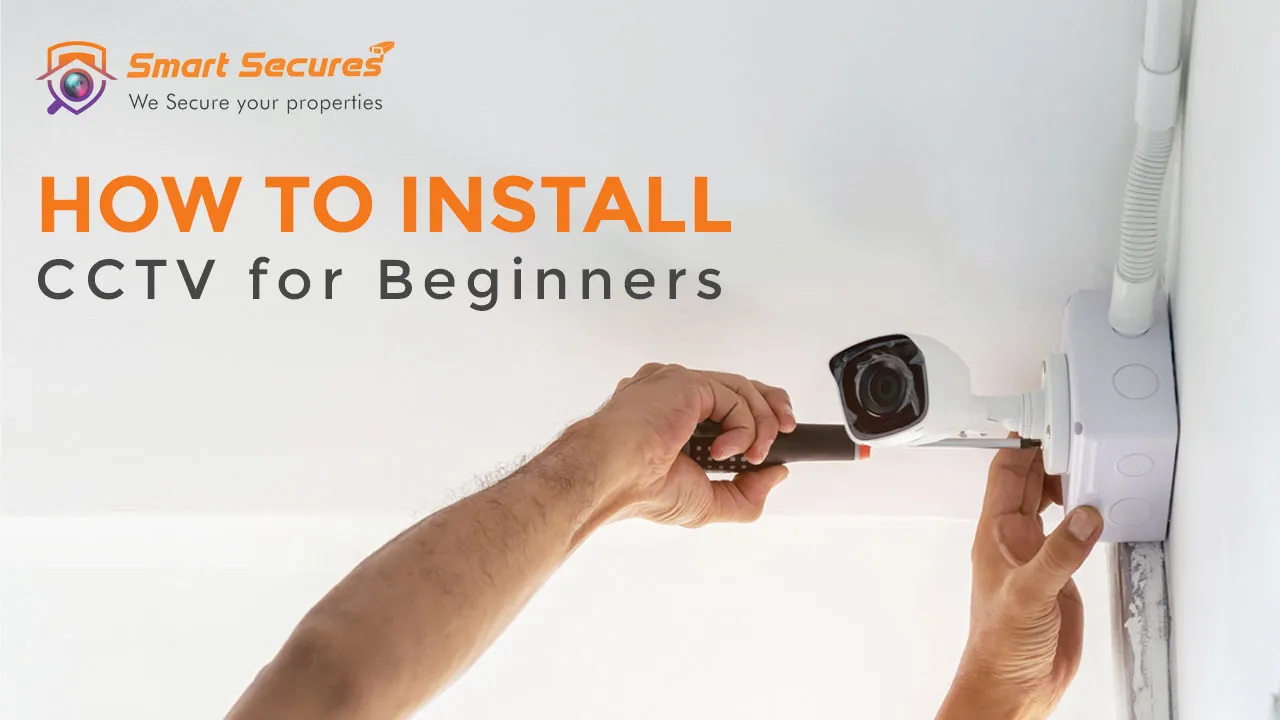Home > Blog > Beginner's Guide to CCTV Installation – Easy Steps for Home Security

CCTV cameras can significantly enhance the ease of setting up CCTV systems for homes, businesses, or industrial properties. To secure a commercial space or a home security camera system, understanding the basics of CCTV installation services is crucial. To meet different security needs, this beginner's guide offers simple steps for setting up a security camera system.
Monitoring activities, deterring crime, and protecting valuable assets require the use of CCTV cameras. The installation of home security cameras ensures better security for homes, businesses, and industrial facilities. Let's dive into a straightforward, beginner-friendly step-by-step tutorial on how to install a CCTV camera.
Before beginning the installation of the security camera, gather the necessary equipment. This is a basic checklist for a straightforward CCTV installation process:
CCTV cameras that can be wired or wireless
A Digital Video Recorder (DVR) or Network Video Recorder (NVR) can be utilized
Connectors and power cables
Tools and brackets for mounting
If your system is wired, use Ethernet cables
A monitor or PC is necessary to view footage
Choose the location where surveillance is necessary. Home and commercial setups commonly use cameras in entry points, garages, lobbies, and reception areas. This enhances security coverage by covering vulnerable areas.
Wireless cameras may be easier to install than security cameras for beginners because they require less cabling. Businesses and industrial sites that require continuous monitoring often opt for wired cameras due to their reliability.
Using the mounting brackets, attach the cameras to the walls or ceilings. Ensure each camera has an unobstructed view of the area you wish to monitor. Adjust the angles for optimal coverage.
Connecting each camera to the DVR or NVR using Ethernet cables is necessary for wired systems. Wireless cameras are required to be connected to the Wi-Fi network. Adhere to the manufacturer's directions for specific configurations.
Connecting the DVR or NVR to a monitor or TV with an HDMI or VGA cable is necessary for viewing the footage. This setup enables you to watch live video feeds and access recorded footage.
Ensure that all cameras have power by plugging them in. Once you connect everything, test the system to ensure that the cameras capture and display video properly. Adjust the camera angles as required.
Position cameras near entrances, driveways, and hallways to monitor movement in the home. Ensure that bullet CCTV cameras are weatherproof and have night vision for 24/7 protection.
Commercial security for offices requires the placement of cameras in entryways, common areas, and storage rooms. To capture clear footage in larger spaces, use cameras with higher resolution.
Focus on high-risk areas such as loading docks, storage areas, and machinery zones when implementing industrial security measures. Take a look at cameras that are durable and have high resolution to withstand harsh conditions.
The cost of installing your CCTV system may be lower than the cost of hiring professional CCTV installers. This holds true particularly for smaller homes or businesses.
DIY CCTV camera installation services allow you to customize the setup to fit your specific security needs.
By becoming more familiar with the installation process, you can improve your ability to maintain and troubleshoot the system.
This guide for beginners on CCTV installation services will assist you in setting up a strong security system. Your property will be protected, whether it's at home, a business, or an industrial site. A DIY approach provides flexibility. This is a great way for novices to gain knowledge about basic CCTV camera setups.
Yes, after installation, you’ll need to configure settings like motion detection, recording schedules, and remote viewing. This can usually be done through the camera’s software or app.

5,852 reviews